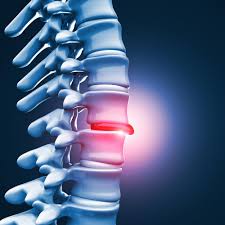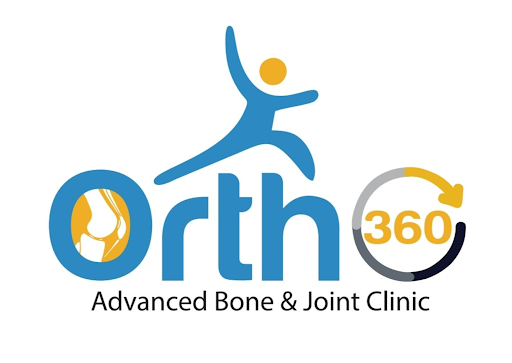- 081819 45945
- Working Hours : 2 PM-8 PM
Backbone Specalist in Hyderabad
- Home
- Spine
Best Doctor for Spine Surgery in Hyderabad
Herniated Disc
What is a herniated disc ?
The condition is also called “slipped disc”. It is a medical condition in which the intervertebral disc protrudes through the spine’s outer rings.
What are the causes ?
Below stated are some of the causes for herniated disc :
- Trauma
- Repetitive movement
- Age
- Stress
- Genetics
- Poor posture
What are the symptoms ?
Some of the symptoms are as follows :
- Pain
- Numbness
- Tingling sensation
- Weakness
- Inability to move
Who is at risk ?
Obese Individual : Extra weight puts extra stress on the spine, putting obese people at risk of herniated discs.
Smoking : Excessive smoking can resist the flow of oxygen into the spine, making the bones more susceptible to breaking.
Occupation : People who carry heavy loads on their backs are at huge risk of this slipped disc condition.
What are the adverse symptoms associated with it ?
Bowel dysfunction : Cauda equina is a medical condition where you find it difficult to pee
Other indications : Pain, numbness, and weakness not enabling you to walk or run
How is it identified ?
Some image tests like CT scans, MRIs, X-rays, and discograms are used to detect herniated discs.
How is it treated ?
Taking too many medications like pain killers can have adverse side effects, so regular exercises, a healthy lifestyle, and stretching exercises can help you relieve pain and promote healing. Surgical methods are also done to treat this herniated disc, but exercises could be the best option to go for to get healing and reduce pain naturally.

Cervical Spondylosis

What is cervical spondylosis ?
Arthritis in the neck and vertebrae is called cervical spondylosis. It is a degenerative condition where the neck and vertebrae get damaged, leading to pain and discomfort.
What are the symptoms ?
Below stated are some of the symptoms of cervical spondylosis :
- Headaches
- Stiffness
- Neck Pain
- Discomfort in walking
- Weakness in limbs
- Loss of bowel control when it is severe
What are the causes ?
The causes for this condition are as follows :
- Wearing and tearing on spinal disc
- Aging
- Herniated disc
- Dehydrated spinal disc
- Bone spur
- Trauma
- Injury
- Stiffness in ligaments
Who is at risk ?
- Aged people
- Chain smokers
- Those who has poor posture
- People who faced neck injuries
- Those who follow sedentary lifestyles
- Who works in a job where they are supposed to move their neck repeatedly
How is it identified ?
- This condition is identified through physical examination, where the doctor tries to detect the external symptoms.
- Some testings like X-Ray , MRI , CT scan , Electromyography is used to detect the damage in bone in neck region
How is it treated ?
The treatment is based on the severity of the condition through surgical and non surgical ways
Non surgical methods
- Physiotherapy
- Exercises
- Acupuncture
- Heat and cold therapy
- Neck brace/splint
Surgical methods
- Cervical disc replacement
- Corpectomy
- Spinal fusion
There are many other surgical methods that are used to treat cervical spondylosis considering the severity and other factors
Spinal Stenosis
What is spinal stenosis ?
It is a condition where we see narrowing of the spinal canal, which compresses the nerves and spinal cord.
What are the symptoms ?
Below stated are some of the symptoms of spinal stenosis :
- Chronic pain that worsens as the condition gets more severe
- Weakness in arms, legs, hands , feet
- Numbness
- Tingling sensation in the affected area
- Difficulty in walking
- Loss of control over bowel
What are the causes ?
There are many causes for spinal stenosis such as :
- Aging
- Herniated discs
- Arthritis
- Trauma
- Tumors
Who is at risk ?
Below are the factors that increase the risk of spinal stenosis :
- Medical history : If you have had any spinal injuries before, you are more likely to get spinal stenosis.
- Work : if your work demands you to carry heavy loads and sit for long period then you are at risk of this condition
- Gender : women are more likely to face spinal stenosis when compared to men
- Age : as you age your spine degenerates and becomes more weak
How is it identified or diagnosed ?
- Electromyogram to check the function of the nerve
- CT Scan , X-Ray , MRI are other image testing method to detect internal damages
- Physical examination
How is it treated ?
The treatment is done based on the severity of the condition :
Non surgical methods
- Pain management : Some sort of medicine is given to reduce the pain
- Physiotherapy : Exercises to promote strength and flexibility
- Steroidal injections : Injections are given to spinal column to reduce pain and inflammation
Surgical methods
- Laminectomy : In this method the surgeon removes a part of the vertebrae in order to reduce the pressure on nerves
- Spinal fusion : In this method, the doctor fuses two vertebrae in order to stabilize the spine.
- Artificial disc replacement surgery : in this method the disc is replaced by some artificial alternate
Several other treatments are done based on severity of the condition

Kyphosis

What is kyphosis ?
It is a medical condition where we see huge forward curvature of the spine in the upper back region, giving a hunched shape to the back.
What are the symptoms ?
Below stated are some of the symptoms :
- Forward head
- Stiffness
- Fatigue
- Round shaped shoulders
- Back pain
What are the causes ?
Some of the causes are as follows :
- Arthritis
- Poor posture
- Aging
- Osteoporosis
What are its complications ?
- Difficulty in breathing
- Chronic pain
- Digestive problems
- Nerve compression
- Damage of spinal cord
How is it identified or diagnosed ?
- Bracing
- Surgery
- Pain management
- Physiotherapy
- Modifying lifestyles like by avoiding carrying heavy loads

